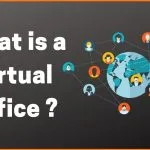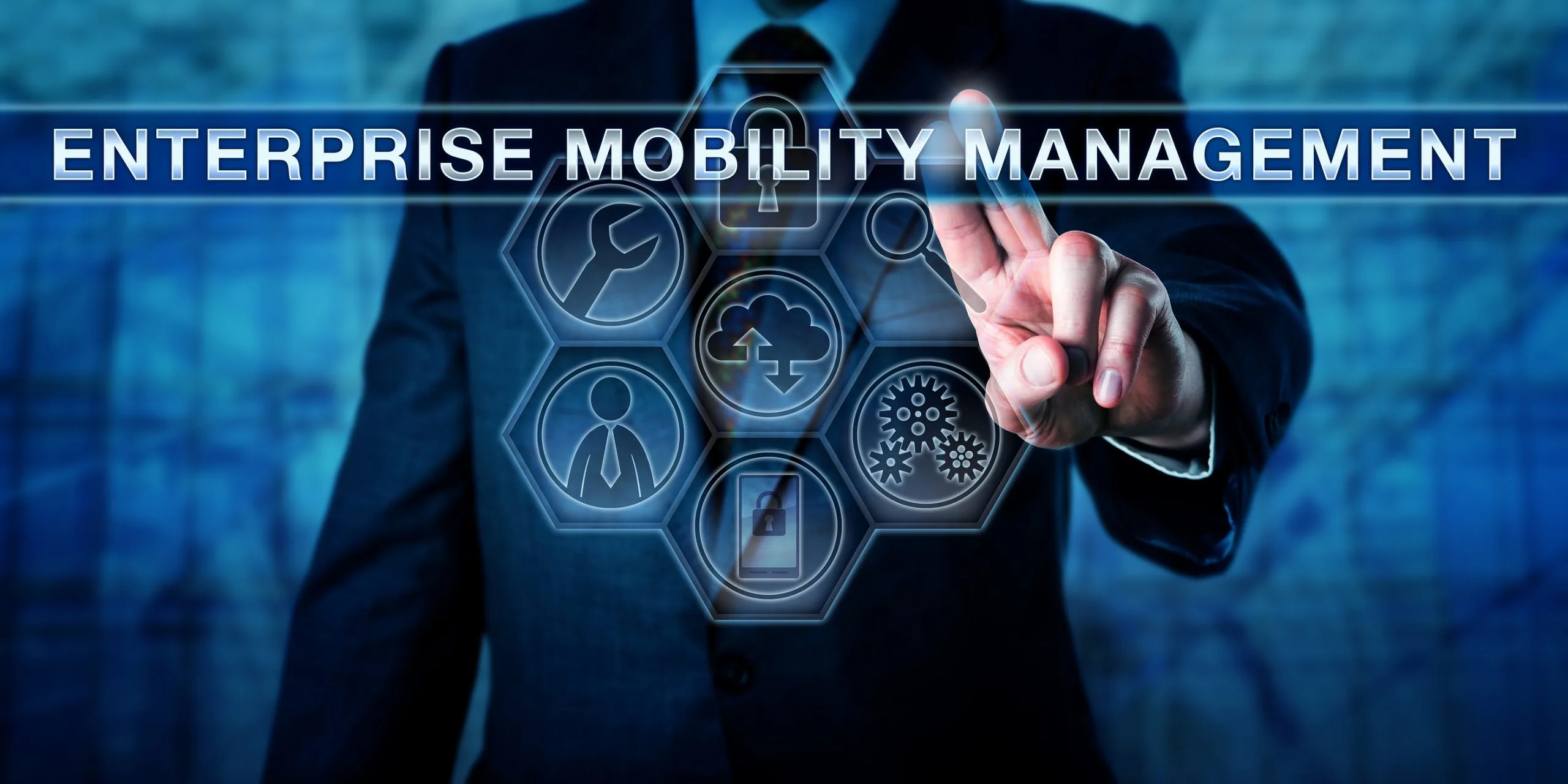Enterprise mobility management is an integrated set of people, systems and technologies designed to manage mobile devices, enterprise software, and other wireless networks in a corporate environment. It encompasses all the systems and technologies that will enable and support mobility at the enterprise level. These systems are designed to provide secure connectivity between different users in the organisation, in order to provide them real-time access and real-time processing, while reducing capital expenditure and increasing operational productivity. To meet these needs, a mobility management system must be configured so that all the systems work together as a team and are able to provide the user with a full range of benefits.
This enables enterprises to maximise their cost savings and reduce operating costs, while simultaneously allowing them to leverage their network and improve device performance. The primary goal of enterprise mobility management is to secure the enterprise data and to retain it for extended periods of time. This is achieved by monitoring the usage of mobile devices, controlling what users can do on their devices and determining the devices that must stay idle or be turned off.
Mobility management dashboard
The first step towards enterprise mobility management and the delivery of a more robust and secure enterprise data management platform is to implement a mobility management dashboard, which is also known as an enterprise mobility management platform. The mobility management dashboard will monitor the performance of the mobile devices such as smartphones, tablets, laptops and smart phones. The dashboard will also determine what users are doing with their devices. For example, if the user is chatting with another user on their desk, the desktop will be off, while the end solution will monitor the device’s battery levels and performance.
Application usage data
The second part of enterprise mobility management is to consolidate and secure the corporate data and application usage data. This includes controlling what workers can do on their mobile devices so they are not wasting valuable time or energy. The application data will be backed up on cloud services and automatically synced with the corporate data repository. This ensures that the corporate data is available and easy to retrieve as needed.
Enterprises
Enterprises have realised that their employees use their mobile phones to do work outside of the office. This makes it vital for them to implement enterprise mobility management policies that will allow them to remotely control their company’s enterprise-grade mobile apps. Most of these policies will allow users to control what permissions the apps can have. They will also usually restrict who can read or change the personal data contained in these devices. Some of these policies will also require companies to alert users before changing any personal data contained in their mobile security devices.
Business
As businesses look towards the future and new forms of technologies, they realise that their employees will likely continue to utilize handheld devices such as smartphones and tablet computers. Smartphones, tablets, laptops, and tablets have revolutionised how employees communicate, conduct business, manage their company data, and more. By incorporating enterprise mobility management into their policies, organisations can protect their most valuable assets: their employees. Organisations can easily adopt these policies and protect their most valued mobile assets.
Zero Trust Access
Zero Trust Access is a new concept in enterprise mobility management that seeks to separate the two networks: the inside from the outside. The basic security principle involved in Zero Trust is where any data that should not be trusted is marked as “trusted”, while all data that should be trusted is encapsulated within a secure Virtual Private Network (VPN). With this system, enterprise mobility management is able to separate data that should be trusted, from data that should not be trusted. Furthermore, this method also allows for an easier transition from one private network to the other, as data in the untrustworthy, external network is removed, while the secure internal network is allowed to pass data between trusted parties.
Multi-factor authentication
This is a complex and demanding approach to providing enterprise security for mobile devices. Multi-factor authentication enables devices to use more than one factor to gain approval into a system. This helps to make hacking more difficult, because multiple factors could be used to gain access into a system. To put it simply, multi-factor authentication involves various factors being checked against known information in order to verify the identity of the user, before they are granted access to the system. In the case of Zero Trust, the VPN used for authentication will be used as a verification factor against the known VLAN of the devices accessing the network, to ensure that they are not cheating.
Traffic steering
A simple way to describe Zero Trust Access is to compare it to traditional WAN traffic. For example, when you connect to the WAN Internet and visit a web page, a special type of request is sent from your identity provider (ISP). The server replies with a request for information from a URL or domain you specify. This information contains the details of the web page you want to visit. If you then enter this URL into a web browser, you can visit this page without revealing any of your personal details.
Monitoring and logging
There are many companies out there that are either trying to figure out how to automate their monitoring and logging processes or trying to figure out if they can do it on their own. Both approaches have different merits. On one hand, some people believe that once you have the ability to track everything, you will always have the upper hand on your competition. On the other hand, it may make sense to look at whether or not human beings can do it in the first place. If we are to continue to stay competitive then we need to make sure that we monitor and log everything that our businesses do.
The reason that we need to consider this is because some logging programs and technologies can turn your system into a black box. This is a problem because any attempts to manipulate the logging process will most likely be detected by the operating system and turned into an error message. There is one exception to this and that’s multi-user systems. Multi-user systems can be very expensive to maintain and can also turn into a black box if the administrators do not carefully control access to the log files. If you want to keep a log file and a log message within the same system, you must make sure that each message and log file have its own unique username and password. If they are all stored under the same user then they will be indistinguishable and no attempts to manipulate them will be caught by the operating system.
If you are considering monitoring and logging then I recommend that you look for a product that offers both granularity in the logging and granularity in the metrics that are output from the logging. Metrics should be separated enough so that an average could be determined for the application performance. This should be considered before you begin shopping for a Enterprise Mobility Management Solution
Always On Encryption
When IT discussions initially turn to issues of encryption, the common topic to come up is always on encryption, specifically Always On encryptions. Encryption used on websites is often the first line of defense against hacking (or leaking, depending on the situation), and it’s usually the very best way to keep information secure for everyday use. Encryption scrambles sensitive information to make it harder for others to access it, and is an essential part of enterprise mobility management.
However, there are certain circumstances where it isn’t the most suitable solution. For instance, many organizations have mobile devices that are accessible through the public wireless connections found in many buildings. While this gives users the freedom and flexibility of going wherever they want for work and play, it also presents a problem for data security: If an employee wants to send secure, confidential data from his or her mobile device to a client, he or she has to be physically present at the office – which may not be possible, especially if the device is left at a hotel or other location that may not follow-up the transmission. This is why enterprise mobility management solutions may need to include Always On encryption as a way of ensuring that sensitive information goes only to the intended parties. Such devices may also need to implement authentication to further prevent unauthorized access; a system that can catch someone logging into a private account by mimicking a username and password that’s already used by another person.
This is also why mobile device management software needs to support Always On encryption. Enterprise mobility management apps should allow businesses to manage enterprise devices such as mobile phones and tablets with ease and allow employees to access corporate information while going where they want: On-demand or at a specified location, for example. With Always On encryption and other features such as identity management, a business can ensure sensitive data remains private and safe even when employees are away. This will ensure better communication and more efficient business operations.
Cloud Integration
Cloud-Integratation is a new approach to enterprise mobility. Cloud-Integration brings together the mobility and IT departments, giving them an integrated platform to work on their common goals, while sharing data between the two departments. With Cloud-Integration solutions providers, organizations can eliminate the need for creating multiple apps and a dedicated mobility dev team. With integration, the organization will only need to focus on the business functions it needs to run and provide those to the various mobile and web services that it needs. The main benefits of integrating with Cloud-Integration are to: Reduce operational costs by leveraging multiple tools and mobility devices to deliver information and content via the web and other applications. Reduce operational cycles by automating processes such as in-platform diagnostics, data ingestion, data collection, data mining, data manipulation and other activities that could consume valuable time.
With the integration of mobile devices and enterprise applications, users can access business content wherever they are; this means that the company can respond to the needs of its customers and be in touch with them. With Cloud Integration, companies will have access to real-time business information, applications, and data from any device, connected anywhere. This reduces time to market and brand exposure. With this integration, enterprises are able to respond to mobile users quickly and effectively.
Cloud-Integration is a way for organisations to automate enterprise mobility management. It will help your company save a large amount of money by reducing the time to market for new technologies and reducing operational expenses. By providing mobility solutions to your business, you will be able to achieve your business goals. With the integration of enterprise mobility management with Cloud-Integration, organisations can eliminate the need for developing and deploying apps for mobile devices and share data across various devices and screens.
Edge Security
Edge Security is a new class of enterprise mobility management for companies that no longer reside within the boundaries of a virtual data centre. It is used basically to secure apps and users at the furthest reaches, or ‘edge’, of a business organisation or internal network, where confidential data is highly at risk of compromise. This new breed of mobile security will combine corporate policies such as: corporate firewall, anti-malware, anti-virus, and other applications designed to protect corporate information and corporate assets. It also offers robust security solutions for: WPA 2 Enterprise Wi-Fi scenarios, enterprise mobility management and other enterprise security solutions.
To gain a competitive edge in this fast moving market, there must be a solution that can provide the following benefits: Reduce the threat of theft, fraud, malware, and more importantly identity fraud and corporate fraud. By providing these security properties businesses are providing a robust solution to the ever present vulnerabilities that remain a part of the corporate IT environment.
The mobility component of this new class of edge security includes solutions such as: Enterprise Portal (previously known as eConnect) which provides businesses with the capability to access applications at different times; MMS/MMS based apps on the go, which allows for instant communication across multiple devices; Pre-shared Access (PSA) which provide easy collaboration and sharing across multiple devices including tablets and smartphones; and Enterprise Search & Recovery which protect sensitive data stored in the backup servers.
This type of mobility management requires the integration of the following business requirements: Enterprise Portal, MMS, SharePoint, and other browser based portals, and the integration of various application services like: CRM, ERP, SQL, Java, XML, etc. This new breed of mobile security is rapidly gaining traction in the enterprise IT environment and is set to deliver new security measures to protect corporate assets.
This deployment process takes various forms depending on the endpoints being protected. For example: Internet connectivity, WAN or LAN card, and the application installed on the endpoints. To ensure the best protection possible businesses should deploy WAN and LAN card enabled edge devices which are capable of supporting the latest VPN technologies to provide the highest level of data protection available. Businesses should also consider configuring WAN and LAN card endpoints which are always on so that they can automatically detect any unauthorized changes to the connection. Businesses need to ensure that they implement proper security controls on all of their internal networks and restrict unauthorized personnel access to the internet and to other vulnerable endpoints.
Concluding
Enterprise Mobility Management (EMM) is an enterprise-wide approach to help companies define, plan, and implement an integrated approach to managing mobility at all levels, including corporate environments and work places. The mobility discipline encompasses a full range of activities, from basic service and support to advanced strategy and planning. Enterprise Mobility Management is designed to help improve collaboration between all layers of an organization, especially between the customer and the company. This enables organisations to address the various mobility needs of their users in the most effective and efficient manner possible. Enterprise Mobility Management helps organizations to proactively monitor mobility within their enterprise, identifying opportunities for improvement, implementing solutions, and exercising restraint when it comes to investments in new technologies.








